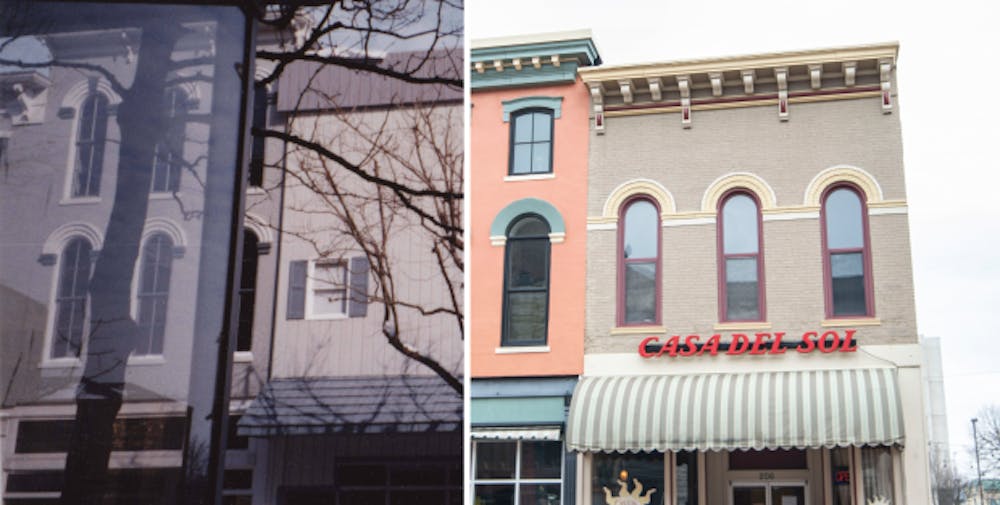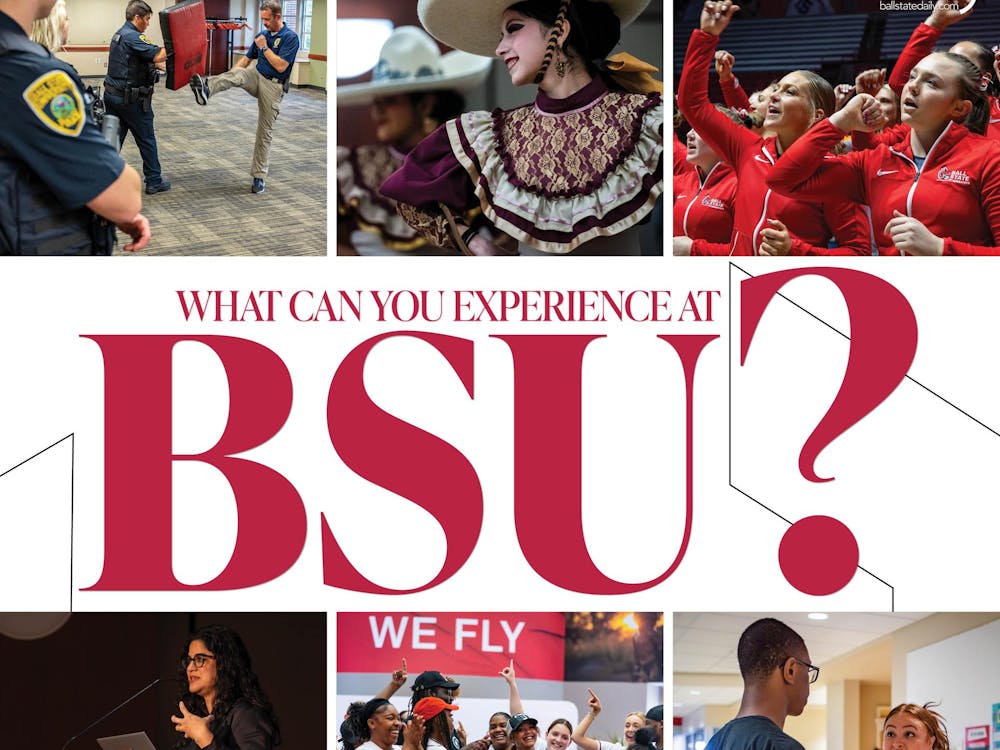The buildings alongside Walnut Street were wrapped in corrugated aluminum, hiding the historic brick facades. Some had been renovated to the styles of the ‘80s. It was a mishmash of architecture. The street was paved over as a plaza for pedestrians to walk from store to store — except they didn’t.
“It looked like a ghost town,” Vicki Veach, executive director of the Muncie Downtown Development Partnership, says. Downtown was 92% vacant in 2012, according to Veach.
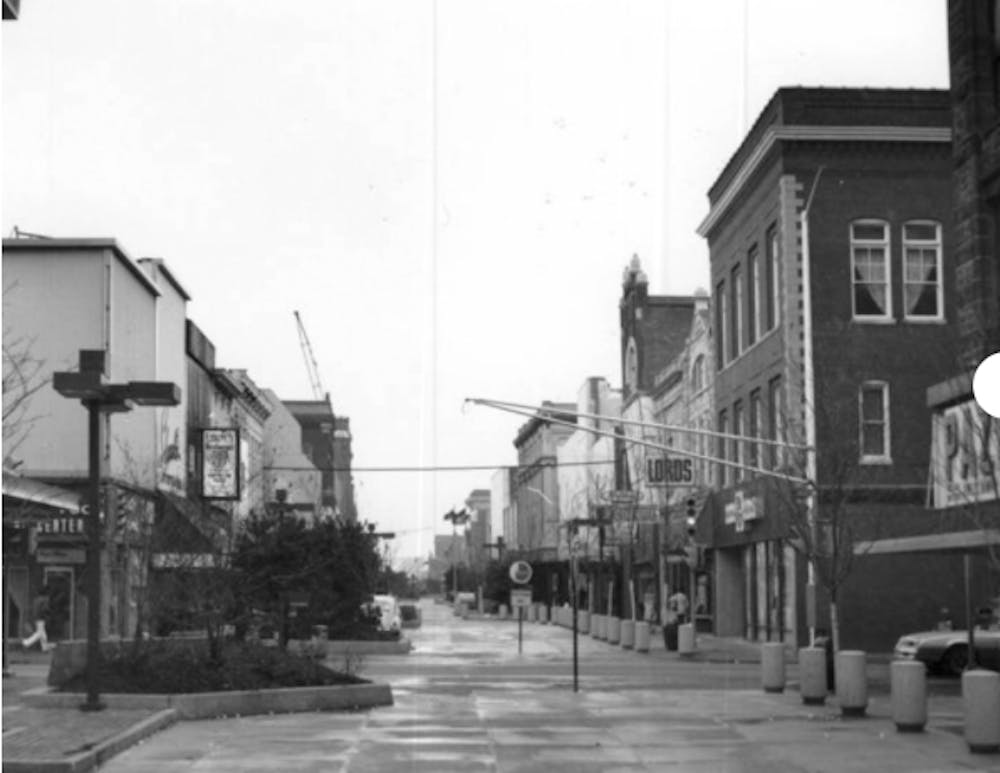
Pazols Jewelers may look the same, but Walnut Street has been transformed since this photo in 1977. The street was once paved for pedestrians, but people weren’t wandering from store to store. Digital Media Repository, Photo Courtesy
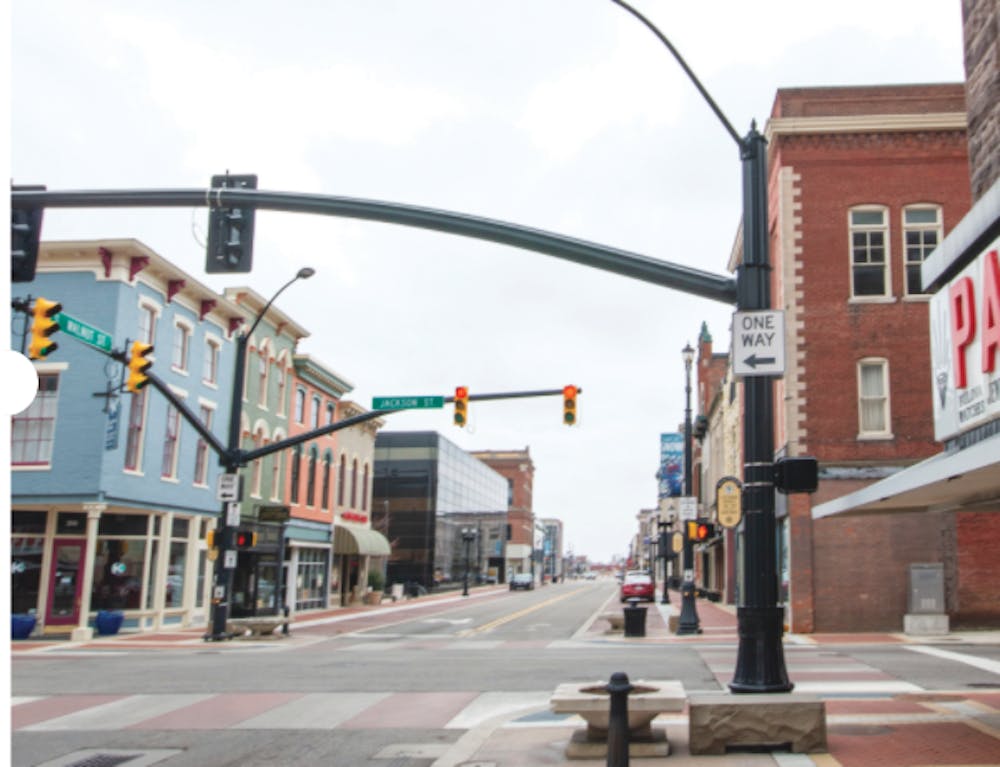
Walnut Street’s design alternates brick and concrete along the street-level sidewalks. Removing curbs makes business more accessible for people with disabilities. Annelise Hanshaw, Ball Bearings
So, in 2012, the Muncie Redevelopment Commission (MRC) offered a grant for downtown property owners to restore buildings to historic standards. Owners could receive up to $250,000 to fund renovations.
The MRC offered $1.2 million as grants to encourage these renovations, and it spurred $21 million in private investment, Veach says.
The city repaved Walnut Street — this time without curbs. This way, it’s wheelchair-friendly and festival-friendly.
Heather Williams, associate director for the Office of Community Engagement at Ball State University, describes the transformation as “night and day.”
When she was an undergraduate student, she didn’t leave campus for the first three years. As a senior, she ventured out to find downtown empty with few businesses apart from Vera Mae’s Bistro and The Heorot Pub and Draught House.
“So much effort has been put into the Downtown beautification; it really became a destination,” Williams says. “You don’t just go to one shop and drive away; enough businesses are here that you can walk from store to store.”
Veach holds a similar sentiment. “One of the things that we’re proud of is that we attract a wide group of different types of citizens in the community,” Veach says. “Downtown is a central gathering place and accessible.”

The Patterson Block building was green in 1993, the olive paint starting to fade. Its next color wasn’t painted until after the Downtown Redevelopment Commission offered grants for exterior restoration downtown. Digital Media Repository, Photo Courtesy
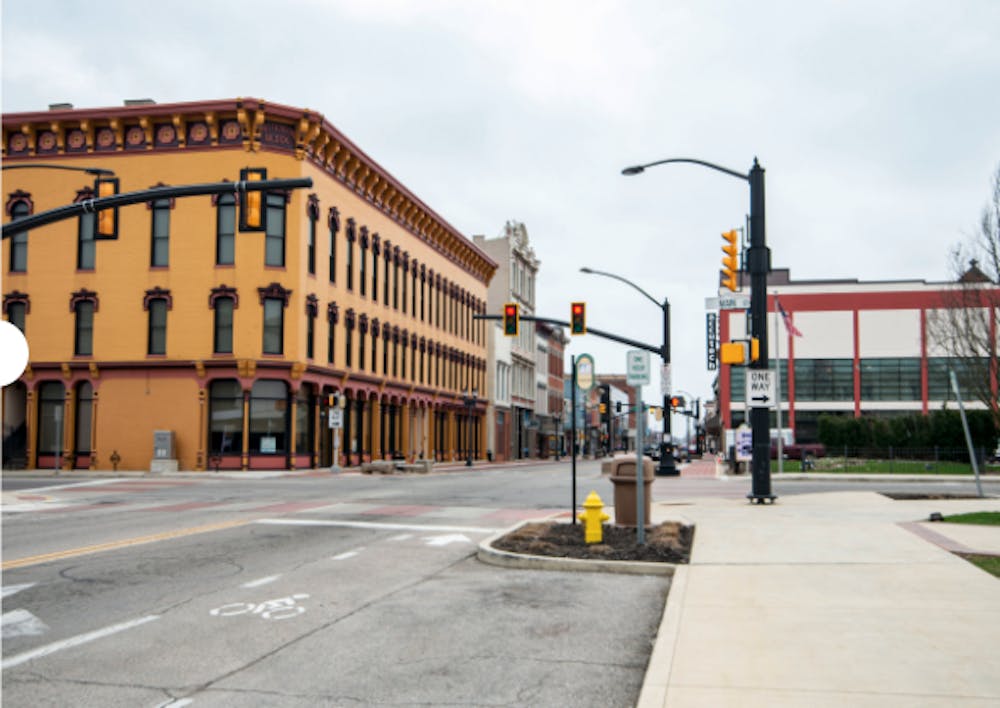
The mustard-and-red Patterson building previously housed Ivy Tech Community College. The school is finishing up a new location adjacent to the bus station downtown. Annelise Hanshaw, Ball Bearings
The Muncie Downtown Development Partnership holds 38 free events throughout the year to get residents engaged. Food trucks circle Canan Commons for Foodie Fridays every week in July. People picnic in the park, buying lunch from the trucks.
The events are just one piece of the partnership’s work.
In 2013, The Muncie Downtown Development Partnership hired Internsection, a Muncie advertising agency, to help them create a branding campaign. They called it “DWNTWN, The Original Muncie,” adding a fresher image to an antiquated downtown.
Black and white photos are coupled with vibrant colors and bold text to attract college students and hopefully companies. Veach says it’s important to brand and invest in the city, and it attracts more business — and jobs — into Muncie.
“When people come here to look to see if they want to bring their business here, one of the first places they look at is downtown and how we’re investing in ourselves and the community,” Veach says. “And so we have to show our best face forward.”
Now, Veach says, downtown is 84% occupied, and residential buildings downtown are full just six years after the rebrand launched.
Housing
To meet the demand for apartments, a development of high-end units is planned alongside the White River on the outskirts of downtown.
Residential planning administrator for MRC Zane Bishop says the project should make the river more of an attraction and link it to the downtown experience.
But the houses surrounding downtown are struggling. According to Census data, almost a third, or 837 houses, are vacant in the 47305 zip code.
Out-of-state investors contribute to this problem, Bishop says. They’ll see a cheap price on a house and not understand all the renovations needed.
A large part of Bishop’s job is managing blighted and vacant properties. Abandoned houses and empty lots affect the city in a variety of ways: housing values drop, less tax dollars are collected, and blight makes Muncie look rundown.
In 2014, Muncie received money from Indiana’s Hardest Hit Fund, an award from the U.S. Department of the Treasury given to states suffering from the downturn of the housing market. The MRC demolished 209 blighted properties with the money, removing eyesores from the community and adding empty lots to the MRC’s thousands of holdings.
Residents can lease empty lots from the MRC for community gardens and pocket parks. They can also apply to purchase property from the MRC.
Nonprofits
There are numerous nonprofits that chip away at blight. Organizations like Urban Light and EcoRehab renovate and build affordable housing, focusing on southside neighborhoods.
A new nonprofit called the Muncie Land Bank was incorporated in 2017 and received non-profit status in 2019. It has not yet acquired property, but it will soon take on a pilot project.
The land bank will maintain houses and land, securing points of entry from squatters and tarping damaged roofs. Then it’ll sell the property after reviewing applications, so it keeps the houses from falling in greedy hands.
“People often say Muncie is a very giving community, but we are also a community of great need,” Williams says.
Williams serves as the secretary for the Muncie Land Bank. She loves working with housing organizations, and serves with EcoRehab, Building Better Neighborhoods, the Village Alliance, and the Muncie Action Plan.
She spends “every waking hour” working to better Muncie, in addition to raising a family alongside her husband Scott (who is one of the owners of Twin Archer Brewpub). She met him pursuing a master’s degree at Ball State, and they settled down in Muncie together.
One of the commonalities between Williams, Bishop, and Veach is that they studied at Ball State and decided to stay before they graduated. (Though Williams spent 10 or 11 months in Chicago between undergrad and grad school.)

Cheap siding or aluminum covered many downtown businesses, hiding the charm beneath. Downtown was mostly vacant, and the storefronts weren’t maintained. Digital Media Repository, Photo Courtesy
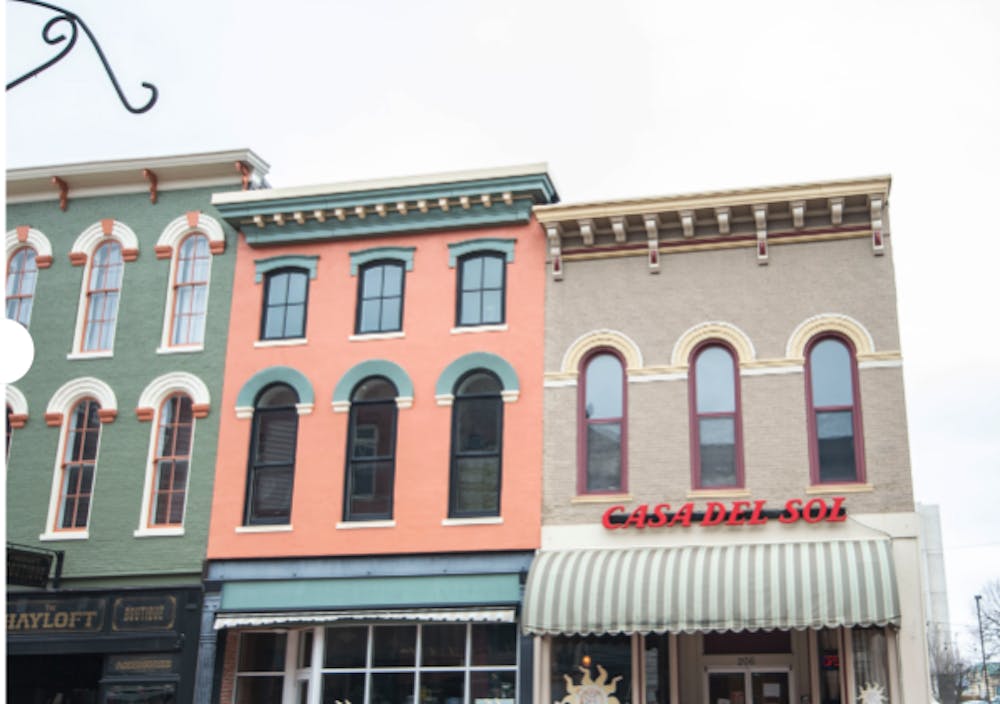
Multi-colored facades line Walnut street. Even small moulding is accented with bright colors, details once hidden by sheets of siding. Annelise Hanshaw, Ball Bearings
Bishop came to Ball State after growing up in suburbs north of Indianapolis. He knew in his sophomore year that he wanted to stay in Muncie.
He didn’t feel a large sense of community in his hometown and liked the size of Muncie.
Him and his wife Courtney love the city so much that they make and sell T-shirts on Etsy bearing the Muncie name. One shirt says “Muncie water tastes fine.”
“It’s a much smaller community here,” Bishop says. “All your daily needs are here, but you actually have the opportunity to meet people and get involved with things.”
Bishop, Veach, and Williams aren’t exactly anomalies in Muncie. They are three of many people in the community passionate about seeing the city grow.

